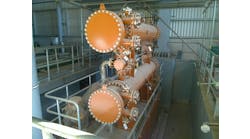Always keep the following pointers about partial stroke testing in mind:
Avoid inappropriate applications. Partial stroking in highly erosive services may lead to increased wear, reduced shut-off capability and shortened valve life. Also, partial stoking of linear valves in dirty environments may do little more than wipe 20% of the valve stem clean while the remainder of the stem becomes caked with solids. When the valve is commanded to close, it may simply stroke 20% and then stop.
Test at sensible intervals. Partial stroking doesn’t need to be done daily, but if partial stroking isn’t done often enough (at least quarterly), then SIL-2 performance will not be achieved.
Understand what’s behind the model. The benefit of partial stroking is based on statistical modeling. While the models are simple (nothing more than high-school-level algebraic equations), they rely on highly subjective data that can be difficult to verify (e.g., failure rates, failure modes, levels of automatic diagnostics and changing failure rates based on frequency of use). However, crunching the numbers will show how much of an impact the various factors have, what can be ignored and what can’t.
Watch out for depressurizing the actuator too much. Be careful if you are lowering the actuator pressure until the valve moves. A valve might stick but eventually slam shut when the actuator depressurizes far enough. Abort the test if the valve doesn’t move after a set period of time.
Don’t get bogged down with the test results. Some solutions provide a wealth of diagnostic information detailing the exact problem with the valve. Others simply report “test failed” if the valve doesn’t move the prescribed distance within the prescribed time. In either case, the end result remains the same — the maintenance department must check out the valve.

